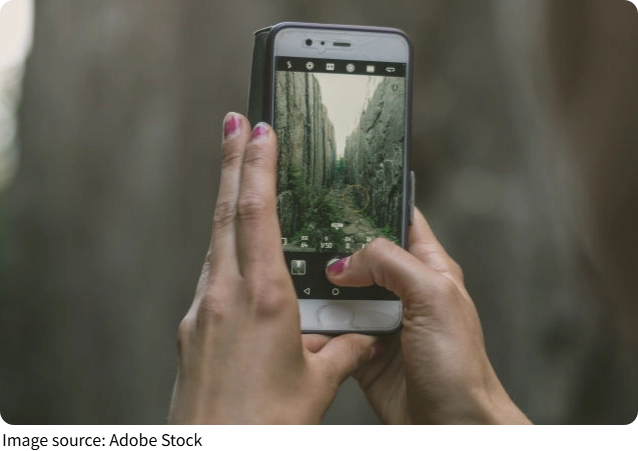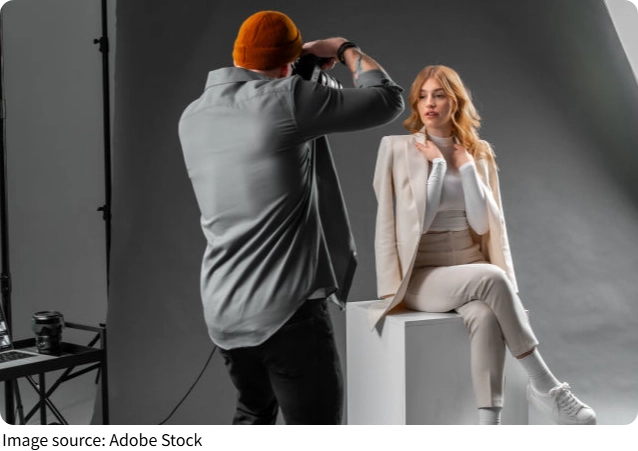Composition That Pops

We've all taken photos that just felt... flat. But then we scroll through social media and see a picture with almost the same subject—and it looks amazing. Why? In most cases, it all comes down to composition.
That's the art of arranging elements in a photo so that it's not only beautiful, but also powerful and memorable. The best part? We don't need fancy gear—just a better eye and a few easy techniques.
Let's explore how we can use composition to boost the visual impact of our photos.
Use the Rule of Thirds
The rule of thirds is one of the easiest and most powerful ways to improve our photo composition. Simply turn on the gridlines in our phone or camera settings—it divides the screen into nine equal squares. Instead of placing our subject right in the center, we can try aligning them along the lines or at one of the intersections.
This creates balance and makes the image feel more dynamic. Whether it's a portrait, a sunset, or a street scene, using the rule of thirds gives our photos instant structure.
Find Strong Leading Lines
Leading lines guide the viewer's eye through the photo and help draw attention to the subject. These can be roads, fences, rivers, hallways—even shadows or light beams. When we spot a strong line, try positioning it so it points toward the main subject or leads into the depth of the frame.
This adds depth and makes the viewer feel like they're stepping into the photo. It also gives our image a sense of motion and storytelling.
Look for Natural Frames
Framing is all about using elements within the scene to surround or highlight our subject. Think of doorways, arches, windows, tree branches, or even hands.
By using these as "frames," we can focus attention on what matters most and create a sense of intimacy or mystery. It also adds layers to the image, making it more visually interesting.
Play with Symmetry and Patterns
Symmetry can be incredibly satisfying to the eye. Whether it's a reflection in water, a perfectly lined-up building, or a face centered in the frame, symmetrical shots have a calm, balanced feel.
Patterns work in a similar way—repeating shapes, lines, or colors create rhythm. And here's a tip: breaking the pattern (for example, showing one red umbrella in a sea of black ones) can make a photo really pop.

Use Negative Space Wisely
Not every inch of our photo needs to be filled. Sometimes, what's not in the frame is just as powerful. Negative space—like open sky, water, or a plain wall—gives our subject room to breathe and creates a minimalist, striking effect.
It can also add emotion. A lone figure against an empty background might feel peaceful, isolated, or even dramatic. Experiment with leaving some parts of the frame simple or empty—you'll be surprised by the results.
Change Your Perspective
One common mistake we make is always shooting from eye level. Let's mix it up! Try kneeling down, shooting from above, or tilting the camera for a creative angle.
A new perspective can turn an ordinary scene into something fresh and surprising. It also helps show familiar subjects—like pets, flowers, or buildings—in new and exciting ways.
Keep the Background Clean
Sometimes a great photo gets ruined by a messy or distracting background. Before hitting the shutter, take a quick look: Are there poles "growing" out of someone's head? Is there too much clutter?
By simplifying the background or repositioning ourselves slightly, we can make the subject stand out more. If the background is busy, try using portrait mode to blur it and keep the focus clear.
Conclusion: It's All in the Details
Composition isn't about rules—it's about guiding the viewer's eye and making our photos more powerful. With just a little more awareness and creativity, we can go from “okay" shots to eye-catching images that tell a story and make people pause.
So Lykkers, which of these tricks are you excited to try first? Next time you're out with your phone or camera, take a few extra seconds to think about your frame—and watch your photos go from good to great!

 · Photography Team
· Photography Team